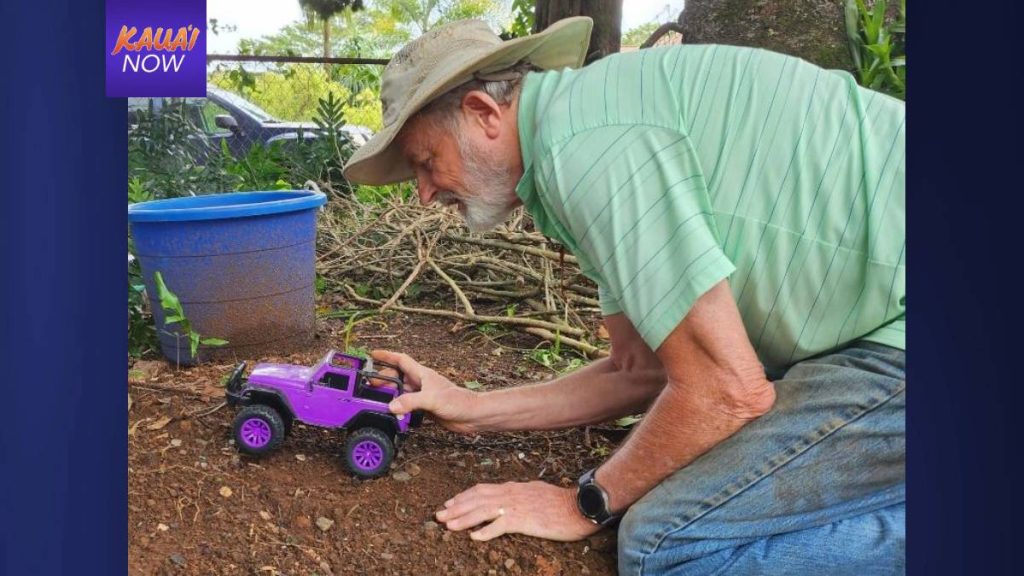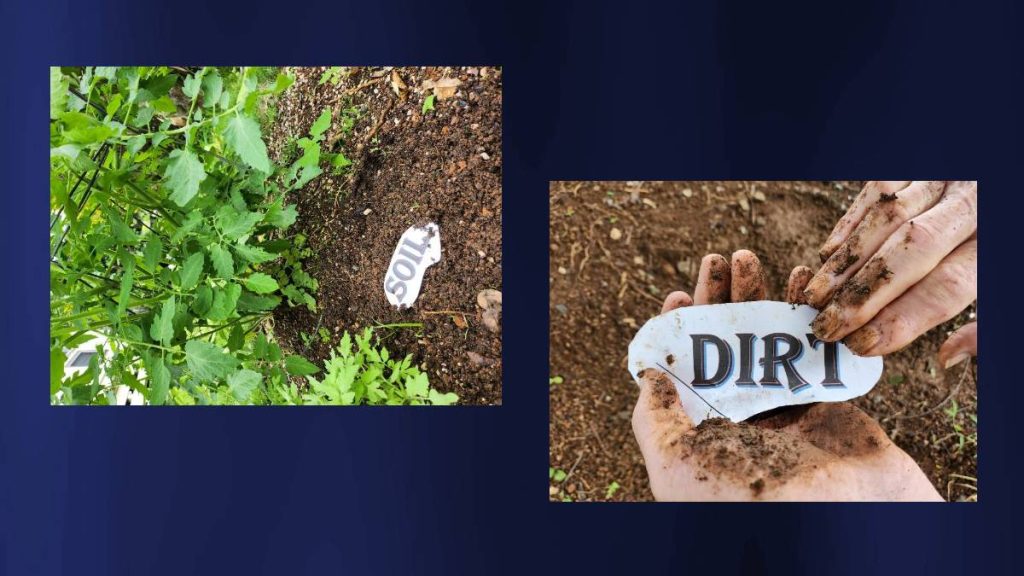Gardening on the Garden Isle: Why should you play in the dirt?
When I was a kid, I liked to play in the dirt. When I started gardening, I thought I would still be playing in the dirt. Boy, was I ever wrong. Weeds love dirt. Weeds grow great in dirt, but most garden plants are snobbish. They prefer soil.
I planted my first garden on Kauaʻi in dirt. I doted on my tomatoes. I gave them water. I gave them fertilizer. I sang to them. And, I gave them my heart. But in return, they gave me nothing but heartbreak and disappointment. I felt just like I did in eighth grade when Scarlet Green returned my Valentine and told me to get lost.

I was preparing my second garden, when my neighbor stopped me and said: “Your garden will grow better in soil.”
I gave him the same look I reserved for a centipede crawling across my right foot. Dirt, snirt, soil, smoil; what is the big deal? Well, it is a big deal!
Simply put, dirt is dead soil or at least soil on its last organic breath. It contains rocks, sand, clay and other inorganic components. Simply put, dirt cannot sustain life, well, not the type of life you want growing in your garden. On Kauaʻi it is rare to find pure dirt, but poor soil is abundant.
As a home gardener, you want the best possible soil. The quality of your garden is only going to be as good as the soil in which you grow. For you to eat healthy plants from your garden, your plants must dine on healthy soil.
You can start with a soil test, but really, are you going to do this? Probably not. Let’s just get to the fun part, playing in the dirt to make soil. Gloves are optional.

Step No. 1: Killing weeds in your garden plot involves little effort. With a weed whacker or a lawn mower, cut the weeds as close to the ground as possible. Remove the weed debris and take it to the green waste site.
Step No. 2: Weeds don’t give up without a fight. It is a good idea to kill the roots of the weeds — and everything else that may thrive in poor soil that can harm your garden plants. Before starting weed extermination, soak the ground so it is wet for at least a foot deep.
Step No. 3: Weeds and many soil pathogens can be destroyed without chemicals using a technique called solarization. That is right. You are going to let the big, yellow guy in the sky do the dirty work.
Step No. 4: Cover the growing area with a clear plastic tarp and secure it. You may be tempted to use black plastic. The fact is that transparent plastic allows all the solar energy to pass through and kills the weeds quicker than black plastic. Depending on the time of year, and the weather, you should have a sterile planting area in three to four weeks. If you have weeds on steroids, e.g. Guinea Grass, you may have to repeat this process.
Step No. 5: Remove the plastic, get your shovel and turn the dirt to a depth of at least eight inches. Break up any clods and rake them smooth. When you are finished, you should be able to dig a nice hole in the dirt with your bare hands.
Nope, don’t plant yet. Your garden plot is not yet ready for plants. You have sterile dirt, not soil. Remember that dirt is not capable of sustaining plant life.
Step No. 6: You need to bring the dirt to life. To do this, add compost to the dirt and thoroughly work it in. Generally, you want about three parts soil to one part compost. Do not plant directly into the compost. This may damage or kill the plant.
If you need to purchase compost at a garden shop, it can be a bit pricey. You may wish to reduce the garden size until you are able to make your own compost. I will cover the basics of composting in the next article.
Compost is a gourmet meal for your plants. It has all the things that dirt lacks. Compost contains the essential plant nutrients of nitrogen (N), potassium (P) and phosphorus (K). Unlike many commercial fertilizers, compost is also rich in micronutrients — sulfur, carbon, magnesium and many others. An additional benefit is compost is rich in micro-organisms. Micro-organisms are essential in helping the plant’s roots uptake nutrients.
Many plants like neutral to slightly acidic soil that has a pH of less than 7.0. Compost helps regulate the soil’s pH. This can be important especially if you live in an area that receives air-borne salt particles from the ocean.
Soil without adequate organic components tend to be dense. Plants can drown in dense soil. Compost helps retain soil moisture without giving the plant wet feet. Compost allows excess water to drain away from the roots, allowing air to remain in the soil. It is important to remember that like us, plants also need oxygen.
Step No. 7: Finally, you get to plant in your new soil. Read the label. Seed labels contain many important growing facts: seed spacing and depth, days for germination, soil pH preference, soil type, lighting requirements and number of days to harvest.
Step No. 8: You have worked hard. It is time to go toes-up on your favorite chaise lounge with a glass of iced tea. Ahh! There is nothing better than a well-deserved reward for a job well done.
In the next article, I will cover ways to make your own compost. It is a great way to get rid of green waste without a trip to the transfer station. It may not be as fun as playing in the dirt, but you are helping Mother Earth recycle. You take care of Mother Earth, and she will take care of you.
Reference and Additional Resources:
- Fertilizer for the Home Garden by Wade W. McCall
- Soil Solarization as an Organic Pre-Emergent Wee-Management Tactic by Josiah Marquez and Koon-Hui Wang
- Is it Dirt or Soil by Aaron Moore
- Weed Control Without Chemicals by David Beaulieu
Editorʻs Note: Every other week, Kauaʻi Now will feature a guest gardening column by Tom Timmons. He is a certified Master Gardener respected for his gardening experience, but his views are not necessarily those of the University of Hawai‘i.
For more information about the Kaua‘i Master Gardener program, click here.



